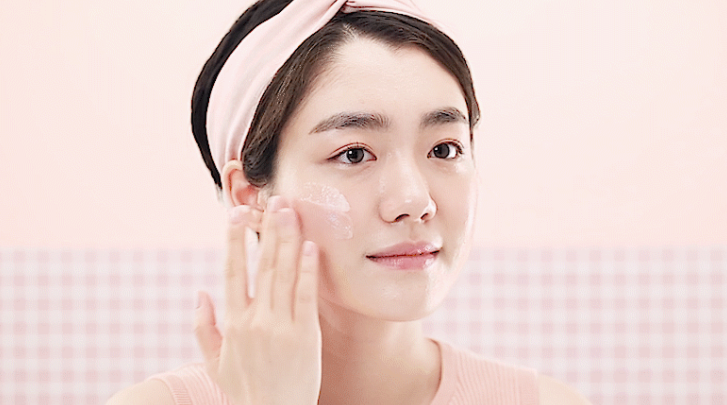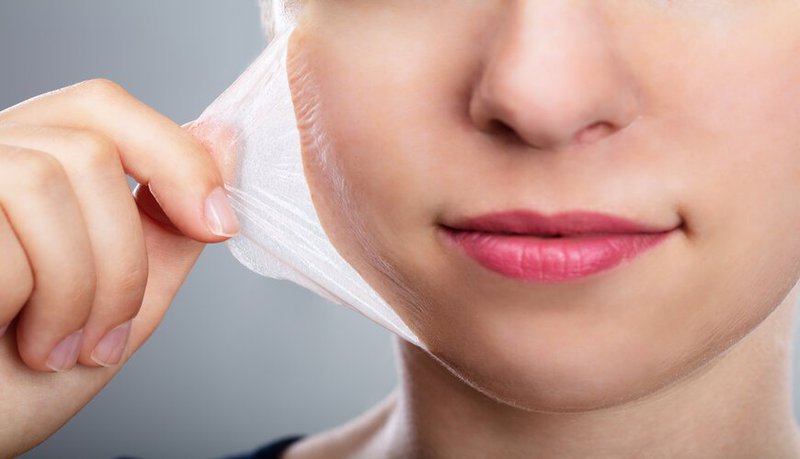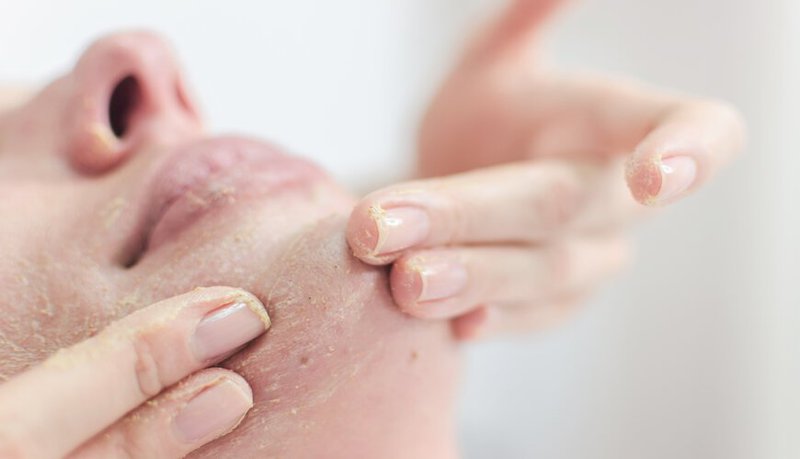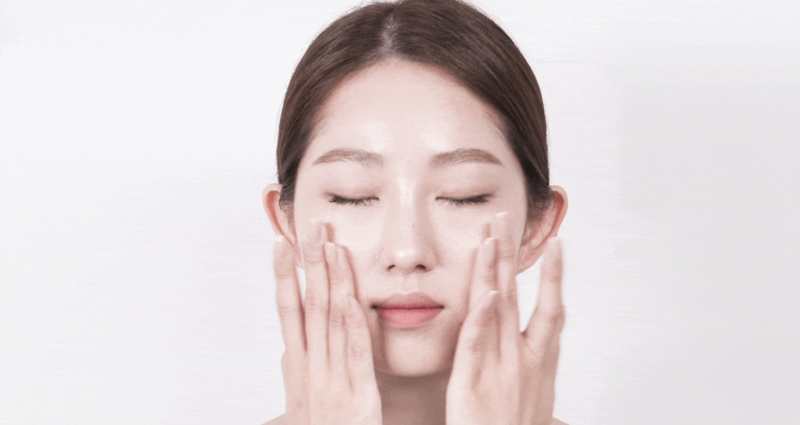Peel skin is good and how?
Chemical peels are a great solution to a wide range of skin problems, from removing wrinkles and improving acne to reducing hyperpigmentation. So, if you are looking for a way to get brighter, clearer and younger looking skin, a peel can be a great option. However, it is necessary to equip the knowledge about peeling properly to limit unwanted reactions and achieve the perfect results as expected.
1. Peel skin is good?
Peel skin is the application of chemicals to penetrate into the structural layers of the skin, remove the old layer of cells, promote the rapid reveal of the underlying skin layers, which are healthier and more beautiful.
Remember that not all chemical peels have the same skin action. Some are intended to treat superficial problems on the skin's surface while others are intended to address abnormalities that originate in the deeper layers of skin. Accordingly, the practitioner needs to consult with a dermatologist specializing in cosmetic skin to determine which chemical peel is best suited for the purpose of performing the peel as well as the characteristics of each skin type. When considered carefully, the right peel will bring some good results as follows:
Remove wrinkles and skin folds
Proper chemical peel will reduce the appearance of lines and wrinkles and folds by removing the outermost layer of skin, revealing a fresh, smooth, and wrinkle-free new layer. Sometimes, a light peel is enough to address superficial wrinkles. Depending on your cosmetic goals, a moderate or deeper peel may also be a better solution.
Repair sun damage to the skin
Exposure to radiation from sunlight accounts for up to 90% of the signs of premature aging. Fortunately, chemical peels can help repair and reverse sun damage on the face, hands, neck, and chest. At the same time, after a peel, being serious about sun protection will help keep the skin fresh and young for a long time afterwards.
Improve acne
Using a chemical peel containing salicylic acid will reduce acne significantly. For this reason, most chemical peels chosen for treating acne are milder, since acne is only a superficial problem on the face.
Limit bad scarring
Moderate chemical peels can help treat both superficial acne and some forms of bad scarring by penetrating deeper into the skin. To reduce the appearance of acne scars significantly, a deeper peel is required.
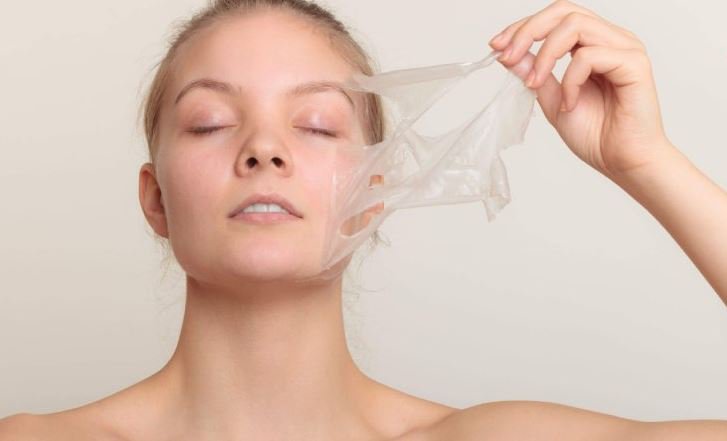
Peel da giúp hạn chế sẹo lành xấu cho người áp dụng
Correction of skin pigmentation
Chemical peels are very good for correcting pigmentation problems such as melasma, hyperpigmentation and skin discoloration caused by age spots or darkening due to acne scars. This method is highly effective on the face, hands, neck and chest area.
Enhances skin tone and texture
In addition to addressing existing skin problems, chemical peels also stimulate the growth of new skin. This rejuvenates the skin's overall tone and texture, quickly resulting in a healthy glow.
Maximize the effectiveness of skin care products
Chemical peels are essentially the removal of the top layer of dead skin, thereby helping to maximize the effectiveness of skin care products. When the dead skin layer is removed, products will be absorbed more fully into the skin, helping the smallest amount of expensive lotion go a long way into the skin.
2. Peel skin properly how to do?
In essence, it's an exfoliant on the skin, to remove dead dry skin cells on the surface and leave softer, smoother skin underneath, while many chemical peels are done in a doctor's office, people can still do a proper peel at home using less intense chemicals.
When learning how to properly prepare and apply these products, chemical peel results are best achieved. However, chemical peels are generally still more effective and safer when performed by a dermatologist - so proceed with caution and follow the peel steps below:
Choosing the right chemical peel
Should buy skin peel products from reputable, well-reviewed companies. If possible, purchase a chemical peel kit from a spa or dermatologist's clinic rather than shopping online. Choose products that are manufactured in an FDA-regulated laboratory, certified to be 99% pure, than products that are self-contained. Make sure the product includes a customer service phone number so you can call and ask questions if needed.
Choose the type of chemical shell based on your needs. Different chemical peels are more suitable for different needs and skin types. Accordingly, how to choose the right peel based on their properties and uses is as follows:
Lactic acid: is the best choice for hyperpigmented skin and good for those who are new to using it because this is an option. the most gentle; highly effective for fading dark spots and smoothing the skin; Can be used for all skin types and is better than glycolic acid peels for dry skin.
Glycolic acid: improve acne, blackheads and skin blemishes; May reduce the appearance of wrinkles and make skin smoother. This is a mild peel that takes little or no time to peel but is more active than lactic acid.
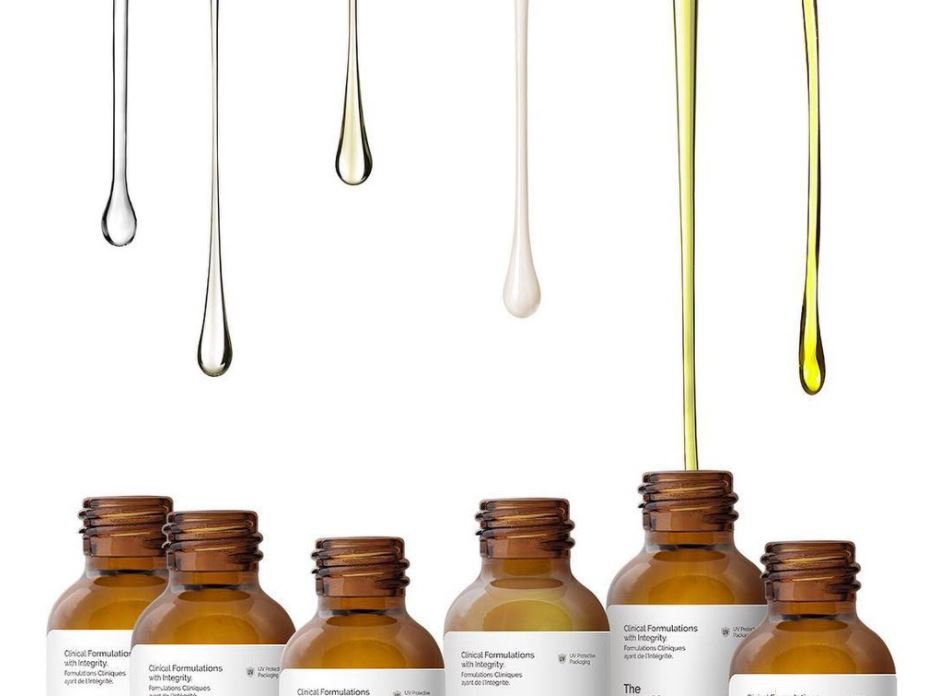
Người dùng nên lựa chọn sản phẩm theo sự tư vấn của chuyên gia da liễu
TCA (trichloroacetic acid): causes more intense and painful peeling and takes 7-10 days for the skin to fully recover; can improve superficial acne scars, stretch marks, milia, sun damage, skin folds and wrinkles.
Should choose chemical peel with the lowest concentration for the first peel. Only gradually increase the strength when the skin is used to it. It is recommended to choose a chemical peel formulation that contains a low percentage of active ingredients of 30% lactic acid, 30% glycolic acid or 8% TCA.
Prepare for a peel
Stop using products with retinoin ingredients for at least a week, like Retin-A or Differin, before chemical peels. These products can irritate the skin, which can affect the results of the peel. For glycolic acid and lactic acid peels, stop using these products for 3-4 days before and after peels while for TCA peels, stop using them for 5 days before and 10 days after.
Gently exfoliate the face the day before the peel with gentle exfoliating products. After cleansing the skin, apply a pH-balanced solution to prepare the peel.
Spot test before applying chemical peel by applying to the skin of the forearm or the skin under the ear at the hairline. Leave the solution on for at least a minute before rinsing it off. Test the area again after 24 hours to make sure there is no negative reaction. If the skin looks normal around the test area, perform a chemical peel with the tested chemical. If skin becomes irritated, red, or tender, reduce the concentration of the active ingredient (glycolic, lactic, or trichloroacetic acid) in the solution and test again on a different skin. If you have used the lowest chemical concentration and still see a reaction, you should not chemical peel. However, if the body shows any signs of an allergic reaction, such as itching or hives, absolutely do not use chemical peels.
Use chemical peels appropriately
Clean your face before applying the peel solution with water and a soap-free cleanser to wash your face. Then let the skin dry naturally.
Protect sensitive skin areas with mineral oil before peeling. Avoid applying chemical peels to areas around the eyes, nostrils, and corners of the lips.
Apply a layer of peel solution evenly to the skin using cotton balls, cotton swabs, small brushes. Start with less sensitive areas like around the forehead, chin, and cheeks. Continue applying chemical peels to the lower eyelids, nose, and neck. Always make sure the solution is evenly applied to the skin; If this is not achieved, the results of chemical peels will not be uniform across skin areas.
Leave the chemical peel on the skin for the recommended amount of time or less. However, in most cases it is advised not to exceed 1 to 2 minutes, depending on the type of peel and the concentration of chemicals in the solution. Therefore, it is necessary to read the instructions carefully before applying. However, if the skin starts to turn pink, wash off the chemical peel immediately.
At the same time, it is necessary to monitor the skin for signs of irritation. Although some skin burns from a peel are normal, if the skin begins to feel intensely stinging, remove the recommended exfoliant as quickly as possible.
After the recommended time, remove the chemical peel and apply a neutralizing solution. In the case of peel kits that do not come with a neutralizer, that means that the chemical peel is designed to stop working immediately after rinsing and no additional neutralizing solution is needed. However, to be safe, the performer can still prepare a mixture of water and baking soda to use as a neutralizer, especially in case the crust is too irritating to the skin. Mix these two ingredients into a paste and apply to the skin after washing off the chemical peel.
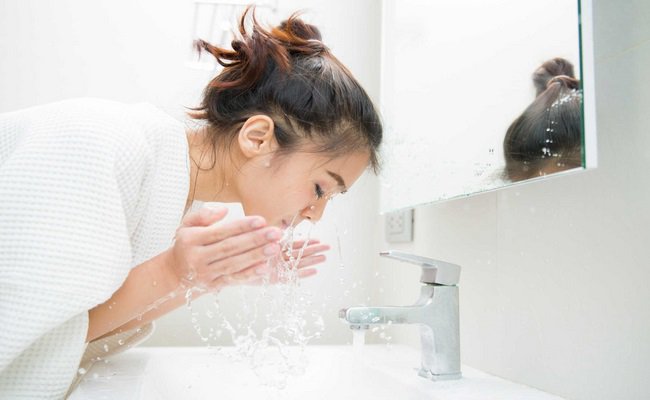
Sau khi sử dụng hỗn hợp, người dùng cần rửa sạch mặt
Use deeper peels only when skin is familiar with periodic peels. However, do not skip the spot test step before applying the new peel to the entire skin.
Post-peel skin care
Apply moisturizer on your face right after the peel. Pay attention to repeat application 10-20 times a day - do not let the skin dry out.
If you see the old skin peeled off, do not peel more, but let them peel off naturally, avoiding further damage to the skin. Dab Vaseline or Aquaphor on very dry areas.
Reduce post-peel redness with skin-cooling products. This may last only a few hours or all day. Soothe the redness by wrapping a cold wet washcloth over your face, or you can also try aloe vera gel, a cooling mask, ice packs, or place a cool mist humidifier in the room.
Protect your face from the sun because the skin will be very sensitive and soft after a chemical peel. Stay out of the sun until the skin heals completely. If you have to go out in the sun, put sunscreen on your face.
Wash your face gently twice a day with water or soap-free cleanser, for 10-30 seconds. Rinse your face with warm water by running it over your face over the sink. Dry the skin with a clean towel gently, taking care not to rub the skin.
Sleep on your back to avoid pressing your face against anything or rubbing it on your face until the skin heals.
See a doctor if you see crusted skin or yellow water, pus discharge. These are signs of a skin infection.
In short, peel is a method of beautifying the skin with many uses, which is very popular, from peels to treat dark spots to peels to improve wrinkles and heal bad scars. At the same time, peels are simple and can be done at home. However, for optimal results, the person performing the peel needs to know how to peel the skin properly and follow the safety rules when peeling the skin.
Please follow the website ( www.vinmec.com ) for more information on health care instructions, which we will update regularly.
Để đặt lịch khám tại viện, Quý khách vui lòng bấm số HOTLINE hoặc đặt lịch trực tiếp TẠI ĐÂY. Tải và đặt lịch khám tự động trên ứng dụng MyVinmec để quản lý, theo dõi lịch và đặt hẹn mọi lúc mọi nơi ngay trên ứng dụng.
References: medicalnewstoday.com, healthline.com, wikihow.com, medartsweightloss.com
Bài viết này được viết cho người đọc tại Sài Gòn, Hà Nội, Hồ Chí Minh, Phú Quốc, Nha Trang, Hạ Long, Hải Phòng, Đà Nẵng.


